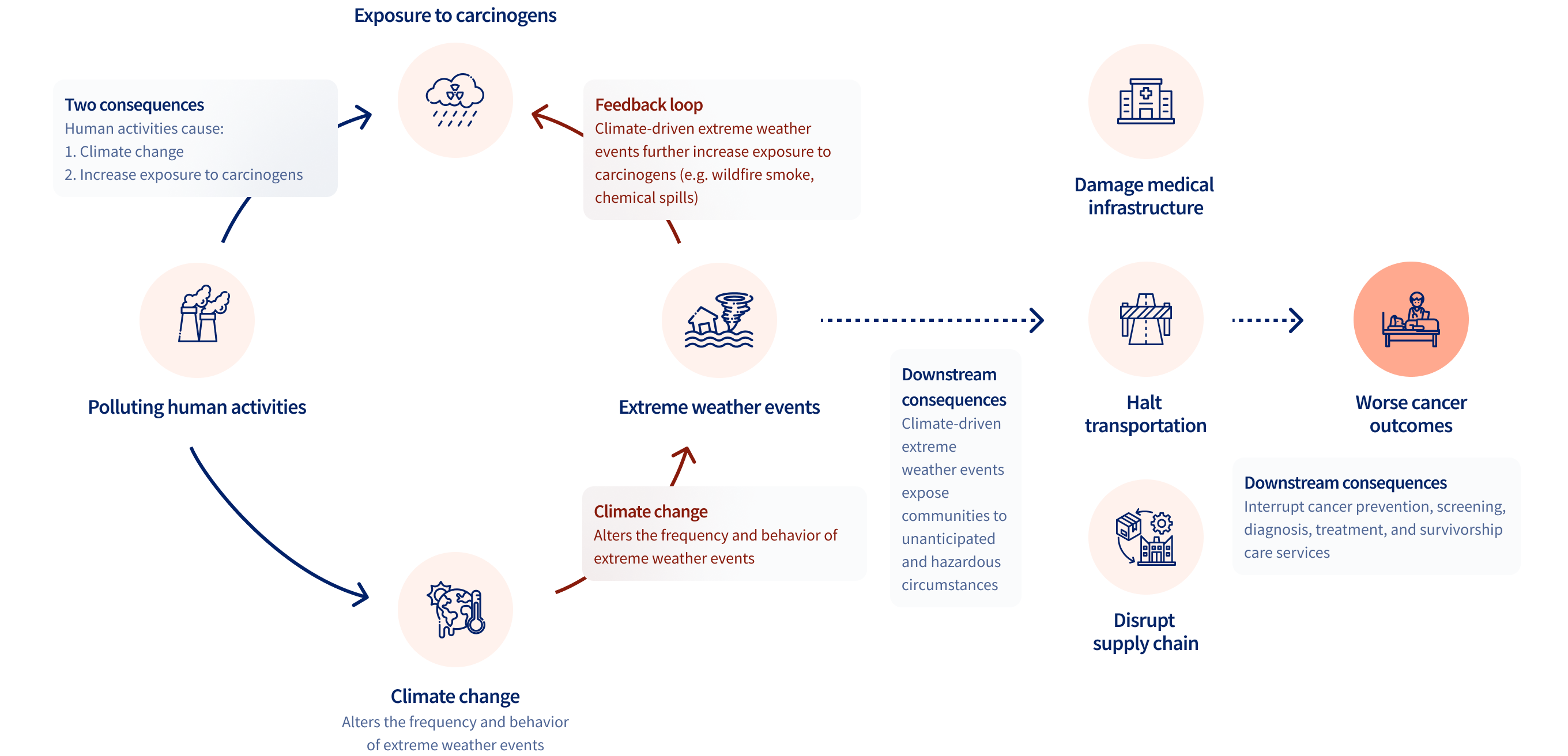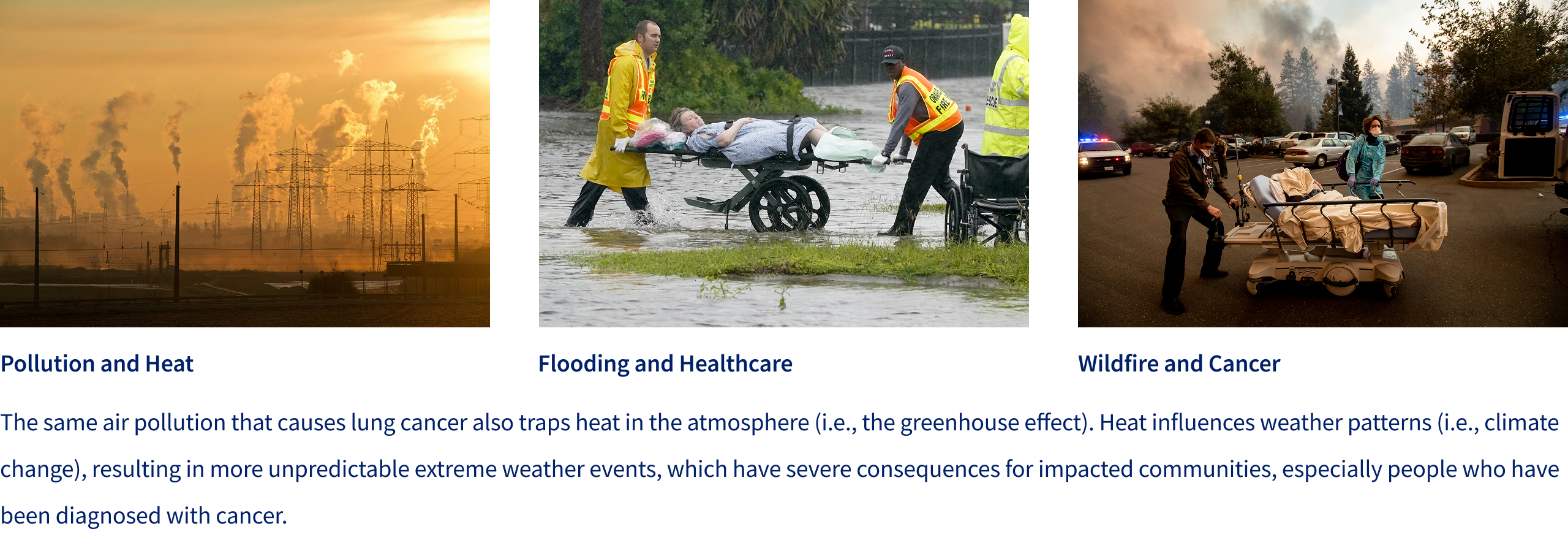Climate Change and Cancer
The cancer community is uniquely positioned to promote climate solutions with co-benefits for cancer control, given the activities driving climate change also exacerbate cancer outcomes.
Climate change impacts cancer control in multiple ways (Figure 11.1). First, human activities cause climate change and increase exposures to cancer-causing agents. For example, extraction, processing, and use of fossil fuels not only exacerbates the greenhouse effect but also increases the risk of certain cancers.
There is a strong relationship between human activities that drive climate change and those that drive increased exposure to cancer risk factors.
Pathways through which climate change impacts cancer control

Footnote
Climate change impacts cancer control through several different pathways. Polluting human activities have two consequences: (1) climate change and (2) increased exposure to carcinogens. Climate change alters the frequency and behavior of extreme weather events creating a (3) feedback loop where climate-driven extreme weather events further increase exposure to carcinogens. (4) Downstream consequences of climate-driven extreme weather events, which behave differently and expose communities to increasingly unpredictable circumstances, include interruptions in cancer control activities.
“Everyone committed to reducing the cancer burden needs to start action on climate change today. Later is too late.”
Second, climate change creates a feedback loop where climate-driven extreme weather events further increase exposure to carcinogens. Climate-driven floods can extend far beyond expected risk zones, reaching industrial areas (e.g., refineries, chemical plants), causing chemical spills, and exposing nearby communities to carcinogens released during fossil fuel extraction and processing (e.g., benzene, formaldehyde, vinyl chloride). Similarly, climate-driven wildfires can increase exposure to air pollution. Therefore, reducing pollution from human activities can have dual benefits for both climate change mitigation and cancer control.
Third, climate change leads to downstream consequences by altering the frequency and behavior of extreme weather events, creating increasingly unpredictable circumstances that complicate disaster preparedness efforts (Figure 11.2).
Current consequences of human-caused climate change to cancer

Footnote
Photos: AP Images / John Raoux and AP Images / Noah Berger
For example, climate change alters the behavior of storms because warmer air holds more water vapor, increasing the water capacity of tropical storms and consequentially heightening the risk of unanticipated and hazardous rainfall and floods. Such climate-driven extreme weather events can damage medical infrastructure, halt transportation, disrupt supply chains, and interrupt access to vaccinations, screenings, diagnosis, treatments, and survivorship care.
“We do not inherit the earth from our ancestors, we borrow it from our children.”
Finally, individuals diagnosed with cancer are vulnerable to the hazards of climate change due to the physical, psychological, and socioeconomic consequences of cancer diagnosis and treatment. Some chemotherapy agents can impair the body’s ability to regulate temperature or weaken the immune system, increasing susceptibility to infections during floods and to temperature-related illnesses during heatwaves.
Considering the serious threat climate change presents to cancer control, global cancer communities should champion climate mitigation and adaptation efforts. These include enhancing disaster preparedness strategies and establishing policies relevant to both global climate change and cancer control.